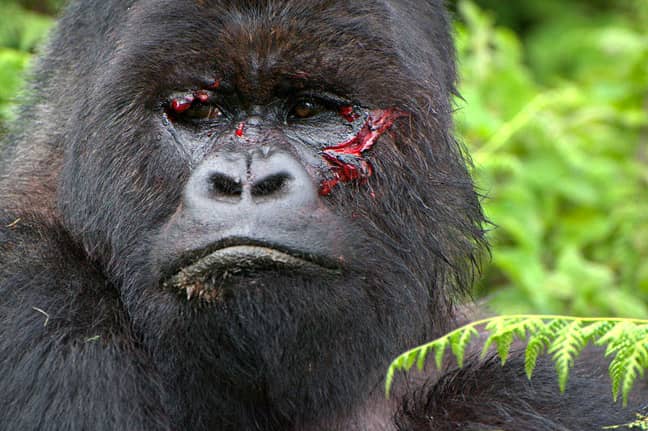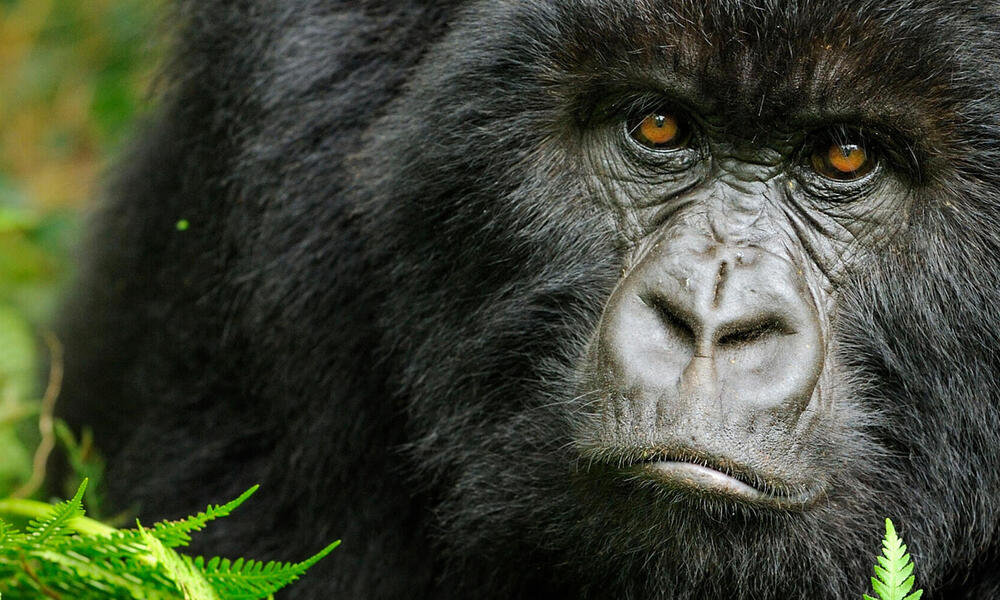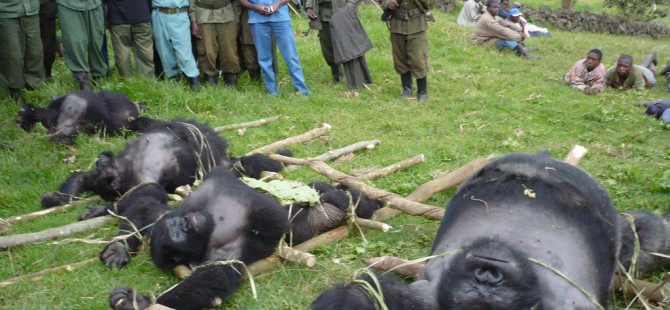Why Are Mountain Gorillas Endangered: Causes, Conservation, & Hope for Survival
Discover why are mountain gorillas endangered, the main threats they face, and how conservation efforts in Uganda, Rwanda, and the Congo are helping protect them.
Introduction
Mountain gorillas (Gorilla beringei beringei), a critically endangered subspecies of the eastern gorilla, teeter on the brink of extinction, with their survival hanging in the balance due to multiple human-induced threats.
The question, “Why are mountain gorillas endangered?” is not just a query but a call to action to understand the challenges they face and the efforts underway to ensure their survival.
The mountain gorilla population decline has been driven by habitat loss, poaching, disease, and conflict, but conservation efforts offer hope.
This comprehensive guide explores the reasons behind their endangered status, their ecological importance, and how we can protect these majestic creatures.
Where Mountain Gorillas Live
Mountain gorillas inhabit two key regions in East Africa: the Virunga Mountains, spanning Rwanda, Uganda, and the Democratic Republic of Congo (DRC), and Bwindi Impenetrable National Park in Uganda.
These misty, volcanic forests provide the ideal mountain gorilla habitat, characterized by dense vegetation and high altitudes.
The Virunga Mountains, a chain of volcanoes, host roughly half of the gorilla population, while Bwindi’s rugged terrain supports the rest.
These areas are critical for mountain gorillas in Uganda, mountain gorillas in Rwanda, and Virunga Mountains gorillas, but they face increasing pressure from human activities.
The limited range of these habitats makes mountain gorillas particularly vulnerable. With only about 1,063 individuals left (based on the latest census), their survival depends on protecting these specific ecosystems.
Encroachment from agriculture and settlements continues to shrink their living space, putting the future of mountain gorillas at risk.
Main Reasons Why are Mountain Gorillas Endangered
Several factors contribute to the question, “Why are mountain gorillas endangered today?” Below, we outline the primary threats to their survival.
1. Habitat Loss
Habitat loss is the leading cause of the mountain gorilla population decline. Deforestation for agriculture, logging, and human settlement has fragmented the forests of Bwindi and the Virunga Mountains.
As human populations grow, more land is cleared for farming, reducing the available mountain gorilla habitat. Forest fragmentation isolates gorilla groups, making it harder for them to find food and mates.
In Uganda and Rwanda, efforts to curb deforestation are ongoing, but the pressure from expanding human settlements remains a significant challenge.

2. Poaching
Poaching of mountain gorillas is another devastating threat. While mountain gorillas are not typically hunted for their meat, they are sometimes caught in snares meant for other animals or killed for the illegal pet trade.
In the past, gorilla infants were captured for private collectors, though stricter enforcement has reduced this practice. Poaching disrupts family groups and reduces population numbers, as gorillas have slow reproductive rates.
Conservation patrols in the Virunga Mountains and Bwindi aim to combat this illegal activity, but it remains a persistent issue.
3. Diseases
Diseases threatening mountain gorillas are a growing concern due to their close genetic similarity to humans. Respiratory infections, such as pneumonia, can spread from humans to gorillas, often with deadly consequences.
Tourists, researchers, and local communities living near gorilla habitats can unintentionally transmit diseases. For instance, a common cold can be fatal to a gorilla with no immunity.
Strict regulations, like maintaining distance during gorilla trekking, help reduce this risk, but disease remains a significant threat to their survival.
4. Civil Unrest and War
Political instability, particularly in the DRC, has exacerbated threats to mountain gorillas. Civil unrest and war disrupt conservation efforts, destroy habitats, and increase poaching.
Armed groups in the Virunga region have historically exploited natural resources, putting pressure on gorilla populations.
Rangers risk their lives to protect Virunga Mountains gorillas, but ongoing conflicts make their work dangerous and challenging. Stability in the region is crucial for effective conservation.
5. Climate Change
Climate change and gorilla conservation are increasingly interconnected. Changing weather patterns, such as prolonged droughts or heavy rainfall, affect the availability of food sources like bamboo and fruit in gorilla habitats.
Rising temperatures can also alter the delicate balance of their forest ecosystems, making it harder for gorillas to survive.
Addressing climate change and gorilla conservation requires global efforts to reduce carbon emissions and protect critical habitats.
How Many Mountain Gorillas Are Left?
As of the latest census, approximately 1,063 mountain gorillas remain in the wild, a figure that reflects both the success of conservation and the ongoing challenges.
The question “How many mountain gorillas are left?” highlights the precarious state of their population. The mountain gorilla population in 2025 has seen a slight increase from previous decades, thanks to intensive conservation efforts.
However, their numbers remain critically low, with populations split between the Virunga Mountains (604 individuals) and Bwindi Impenetrable National Park (459 individuals). These mountain gorilla numbers underscore the need for continued protection to prevent further decline.

Conservation Efforts Saving Mountain Gorillas
Despite the threats, mountain gorilla conservation efforts have made remarkable progress. Organizations like the Dian Fossey Gorilla Fund, World Wildlife Fund (WWF), and Uganda Wildlife Authority lead initiatives to protect gorillas.
Anti-poaching patrols, habitat restoration, and community engagement are key strategies. In Rwanda and Uganda, gorilla trekking permits generate significant revenue, with funds reinvested into conservation and local communities.
For example, Rwanda’s Volcanoes National Park and Uganda’s Bwindi Impenetrable National Park rely on eco-tourism to support ranger salaries and habitat protection.
Eco-tourism has been a game-changer, with how tourism helps save mountain gorillas becoming a model for conservation. Strict regulations, such as limiting the number of visitors and maintaining a safe distance, ensure minimal disturbance to gorilla groups.
These efforts have contributed to a slow but steady increase in gorilla numbers, offering hope for the future of mountain gorillas.
Why Mountain Gorillas Are Important
The importance of mountain gorillas extends beyond their iconic status. Ecologically, they play a vital role in seed dispersal, helping regenerate forests in the Virunga Mountains and Bwindi. Their foraging habits promote biodiversity, ensuring healthy ecosystems that benefit other species.
Economically, why protect mountain gorillas is clear: gorilla trekking generates millions in revenue for Rwanda and Uganda, supporting local communities through jobs and infrastructure development.
Protecting mountain gorillas also preserves cultural heritage, as these animals are a symbol of East Africa’s natural legacy.
What Can Be Done to Help
The question “How to help save mountain gorillas” has actionable answers. Responsible tourism is a powerful tool—by choosing ethical gorilla trekking experiences, visitors can support conservation directly.
Donating to organizations like the Dian Fossey Gorilla Fund or WWF ensures funds go to anti-poaching efforts and habitat restoration.
Reducing global carbon footprints can mitigate climate change and gorilla conservation challenges. Additionally, raising awareness about the threats to mountain gorillas in Uganda and Rwanda encourages broader support for their protection.
Individuals can also advocate for policies that reduce habitat destruction and support sustainable development in gorilla regions. By making informed choices, such as supporting eco-friendly products, we can all contribute to protecting mountain gorillas for future generations.
Conclusion
The question “Are mountain gorillas still endangered?” remains answered with a sobering “yes,” but there is hope. From a low of a few hundred in the 1980s, the mountain gorilla population in 2025 has grown to over 1,000 due to dedicated conservation efforts.
By addressing threats to mountain gorillas—habitat loss, poaching, disease, conflict, and climate change—we can ensure their survival.
Through responsible tourism, global support for conservation, and collective action, we can secure a brighter future for mountain gorillas, preserving these gentle giants for generations to come.
